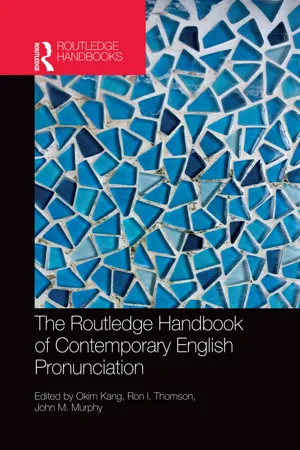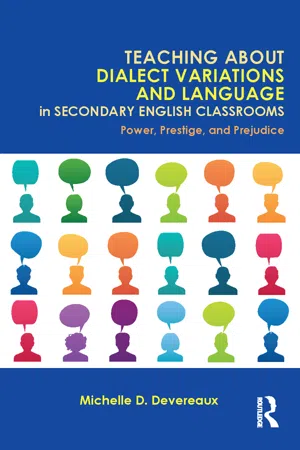Languages & Linguistics
Contrast
Contrast refers to the comparison of two or more things to highlight their differences. In linguistics, contrast is used to distinguish between sounds, words, or grammatical structures in a language. It is an important concept in phonology, morphology, and syntax.
Written by Perlego with AI-assistance
Related key terms
3 Key excerpts on "Contrast"
- eBook - ePub
- Kirsten Malmkjaer, Kirsten Malmkjaer(Authors)
- 2009(Publication Date)
- Routledge(Publisher)
pair of languages), and founded on the assumption that languages can be compared’ (James 1980: 3). Contrastive analysis traditionally has an applied perspective, branching into translation studies as well as language pedagogy. However, Contrastive analysis may also be more theoretically orientated, e.g., by investigating how a universal category X is realised in languages A and B (Fisiak 1981: 2). Contrastive/ cross-linguistic studies are not dependent on any particular theoretical framework. However, they tend to involve only a small number of languages, typically a pair, in Contrast to studies of universal grammar or language typology.Any fruitful comparison presupposes that the items compared have something in common (cf. Krzeszowski 1995: 9). A central concern of Contrastive linguistics is thus that of identifying an appropriate tertium comparationis, i.e. a ‘third term’ that can provide a frame of reference for the comparison. Various types of tertia comparationis have been suggested and used: formal (similarity of form or of grammatical categorisation), semantic (similarity of meaning) and functional (similarity of communicative purpose, genre etc.) (see Chesterman 1998). Particularly in connection with the use of parallel corpora (see below), the notion of translation equivalence has been advocated as a tertium comparationis ( James 1980: 178; Johansson 2007: 3).The Contrastive analysis hypothesis
Contrastive methods have a long history in linguistics (e.g., Weil 1844; Mathesius 1935/1961), and Krzeszowski (1995) gives examples that go back to the Renaissance. Contrastive analysis as a branch of applied linguistics, however, was developed in the USA in the 1940s and 1950s (see e.g., Fries 1945 and Lado 1957). The motivation for this work was foreign-language teaching and the development of teaching materials: ‘The most efficient materials are those that are based upon a scientific description of the language to be learned, carefully compared with a parallel description of the native language of the learner’ (Fries 1945: 9); ‘in the comparison between native and foreign language lies the key to ease or difficulty in foreign language learning’ (Lado 1957: 1). Such a view of the role of Contrastive analysis gave rise to the strong version of the Contrastive analysis hypothesis (Wardhaugh 1970); i.e. the belief that difficulties in learning a language can be predicted on the basis of a systematic comparison of the system of the learner’s first language (its grammar, phonology and lexicon) with the system of a second language. A weaker version of the Contrastive analysis hypothesis is based on ‘evidence of language interference’ (Wardhaugh 1970: 123) and is thus related to error analysis - Okim Kang, Ron I. Thomson, John M. Murphy, Okim Kang, Ron I. Thomson, John M Murphy(Authors)
- 2017(Publication Date)
- Routledge(Publisher)
Historical and theoretical perspectives on pronunciationPassage contains an image
John Archibald1 Transfer, Contrastive analysis and interlanguage phonologyIntroduction
As with any field that has been active for over half a century, the technical terms found within it are both precise and, simultaneously, laden with connotation. In this chapter, I have purposefully used traditional terms in the title because I think they provide a fine vehicle for surveying some of the key issues in both the history and future of the discipline.Historical and current conceptualizations
As Stern (1983) showed, much of the history of the study of second language learning was, in fact, more focused on second language teaching . There was much concern as to which teaching method was the best. Gradually, this emphasis began to shift as the field of second language acquisition (SLA) emerged, and more attention was paid to the learner. For the benefit of newcomers to the area, let me begin by setting out the timeline by introducing key terms.Transfer : It has long been widely recognized (e.g. Gass & Selinker, 1983) that second language (L2) production is influenced by properties of the first language (L1). Surface level elements were the focus of descriptions of L2 production (either spoken or written).Contrastive analysis : In an effort to determine why some learners were not learning some elements, the method of Contrastive analysis (Lado, 1957) attempts to describe or explain what was called ‘non-learning’. At this point, it would be worth pointing out that the work in language teaching, or applied linguistics, or educational linguistics, was not isolated from other academic disciplines (such as psychology). At the time when Contrastive analysis was first proposed (see Archibald, 1993, for discussion), the dominant theory of learning was behaviourism (an extreme form of empiricist learning theory). Such an account places the emphasis on the environment as the driver of learning and highlights the role of feedback as the driver of change in the learner. From this perspective, the goal is to design the best learning environment (i.e. classroom) to ensure that learning takes place. Following a behaviourist paradigm of learning as habit formation within a model of stimulus/response, there was no place in the discipline for what was known as mentalism- eBook - ePub
Teaching About Dialect Variations and Language in Secondary English Classrooms
Power, Prestige, and Prejudice
- Michelle D. Devereaux(Author)
- 2014(Publication Date)
- Routledge(Publisher)
Contrastive analysis has been used in second language acquisition for decades (Wheeler and Swords, 2006) and transfers easily to second dialect instruction since all English language variations adhere to grammatical and phonological rules (Adger, Wolfram, and Christian, 2007; Baratz, 1969; Baugh, 1999; Green, 2007; Labov, 1972; Redd and Webb, 2005; Simpkins and Simpkins, 1981; Wheeler and Swords, 2006). The rules of one variation can be Contrasted and analyzed (i.e., Contrastive analysis) against another. Thus, all students can (1) learn the rules of vernacular varieties often found in the literature taught in the secondary English classroom and (2) master the rules of Standard English to access mainstream power in America.T-charts, the tool used to Contrast and analyze patterns, prepares students to expect a range of linguistic patterns across:● sound (pronunciation);● grammar;● vocabulary (Devereaux and Wheeler, 2012).T-charts can be used for both reading and writing instruction and will be detailed in the following pages.ContrastIVE ANALYSIS IN THE CLASSROOM
As I discussed in Chapter 1 , Contrastive analysis is a useful strategy for two reasons: (1) students may struggle with dialectally-diverse texts such as The Adventures of Huckleberry Finn, Their Eyes Were Watching God, and As I Lay Dying, and (2) students may use vernacular features in their formal papers. Indeed, the dialectal features in literature and your students’ writing may look very similar. For example, in Table 7.1 you will find excerpts from ninth grade writing samples.These ninth graders are not making mistakes; rather, they are following the linguistic rules of their home dialect. Many linguists, including Green (2007), Wheeler and Swords (2006, 2010), and Redd and Webb (2005), detail the linguistic patterns found in your students’ writing, named in the right-hand column of the table. Since we see authors using the same linguistic patterns (see Table 7.2 ) in literature, we cannot assume these are “mistakes” but are rather “patterns” or “linguistic rules.”Contrastive analysis details the sense and order of students’ home language varieties while at the same time helping them to consistently use the Standard English they need to access mainstream power structures in America. Although some students may use vernacular features unconsciously, some students may consciously use them in an act of civil disobedience against school.
Index pages curate the most relevant extracts from our library of academic textbooks. They’ve been created using an in-house natural language model (NLM), each adding context and meaning to key research topics.


